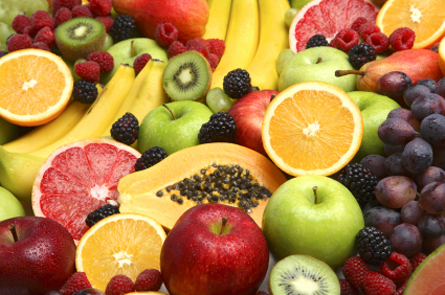Few Americans eat right
The vast majority eat too few vitamin- and mineral-rich foods and overdo on fats, sugars and alcohol


Most people missed the mark on nearly every nutrient category, the study found. Overindulgence in some discretionary nutrients, however, “was ubiquitous” — notably for solid fats (i.e. not vegetable or fish oils), added sugars and alcohol, according to Susan Krebs-Smith of the National Cancer Institute and her colleagues.
Most people have at least heard about recommended daily allowances for nutrients, also known as RDAs (even though the term was officially jettisoned more than a dozen years ago in favor of terms like dietary reference intakes, which have yet to catch on with the public). Whatever they’re called, these federally adopted guidelines set out age- and gender-appropriate intakes for protein, fats, carbohydrates (sugars and starches), vitamins and minerals. The hope has been that individuals will compare their eating habits to the guidelines so that they might be persuaded to cut back where they’ve been over-consuming and increase intakes of nutrients they shortchange.
Assessing how well groups of people have adhered to these guidelines has proven problematic because surveys have relied on what individuals recall having eaten in the past 24 hours. Not only may memories fail to accurately portray the quantity of foods consumed, but most foods also are a mix of perhaps dozens of nutrients. That mix can vary with the recipe, the way a food was prepared and its freshness.
Another obstacle to 24-hour recalls is that many people eat quite varied diets. What I down today may not reflect what I’ll eat tomorrow or indeed on any day in the next 10. Researchers have hoped that what most people describe eating on any given day will prove a rough gauge of their typical intake and that any variability will largely average out if they survey a big enough and broad enough cross-section of people.
In hopes of devising an even better indicator of “usual” food intake, NCI scientists have developed a method of integrating data from a pair of 24-hour dietary recalls, such as those collected from participants of recent National Health and Nutrition Examination Surveys. Conducted by a unit of the federal Centers for Disease Control and Prevention, these periodic surveys recruit participants carefully so that data from the whole should be nationally representative of the U.S. population.
For their new study, Krebs-Smith and her colleagues used dietary recalls collected by NHANES between 2001 and 2004 for more than 16,000 people age 2 and older. Reported food quantities were translated into their likely nutrient components based on a USDA database. To extrapolate how consumption patterns might play out nationally, the survey findings were run through a computer model that accounted for each individual’s age and ethnicity, whether the recall covered a weekend day (when intakes can become especially variable), family income and more.
What we eat
“A large majority of the population did not meet the minimum recommendations for every one of [USDA’s] nutrient-rich food groups except total grains and meat and beans,” the researchers report in the October Journal of Nutrition.
Indeed, at least 88 percent of the population failed to meet daily intake recommendations for total vegetables, dark green veggies or orange ones. At least 96 percent missed the mark for legumes and whole grains. With the exception of young children and adolescent boys, 84 to 98 percent of Americans fell short of their recommended intake of milk. People do somewhat better in getting enough whole fruits: On average, only 75 percent of Americans consume less than what is recommended.
Of course there were a few categories where shortfalls weren’t the problem. For instance, 86 to 89 percent of people over age 70 take in more calories per day from solid fats than is recommended. Rates in everyone else were even worse. For instance, more than 99 percent of children 8 and under ate more margarine and other solid fats than federal guidelines recommend.
The situation was a bit better for added sugars. Here, as few as 50 to 65 percent of the people in some age groups exceeded recommended intakes. In most age groups, however, too-sweet diets were overwhelmingly prevalent. Surpassing all other age groups, again, were kids 8 and under: 99 percent exceeded the recommended daily allowance for added sugar (that not naturally found in a food, such as fruit).
More than one-in-five males between the ages of 19 and 50 overindulged in alcohol — in terms of calories, anyway — as did at least one-in-10 females within the same age groups.
Together, the new findings offer “another piece to the rather disturbing picture that is emerging of the nation’s diet,” the federal scientists write. They also “underscore the need for individual- and environmental-level interventions.” Indeed, they add, the “stark contrasts” between what Americans eat and what they should be eating is especially worrisome “in the context of the obesity epidemic and alarming rates of other diet-related chronic diseases.”
Next: Pernicious influences on dietary choices







